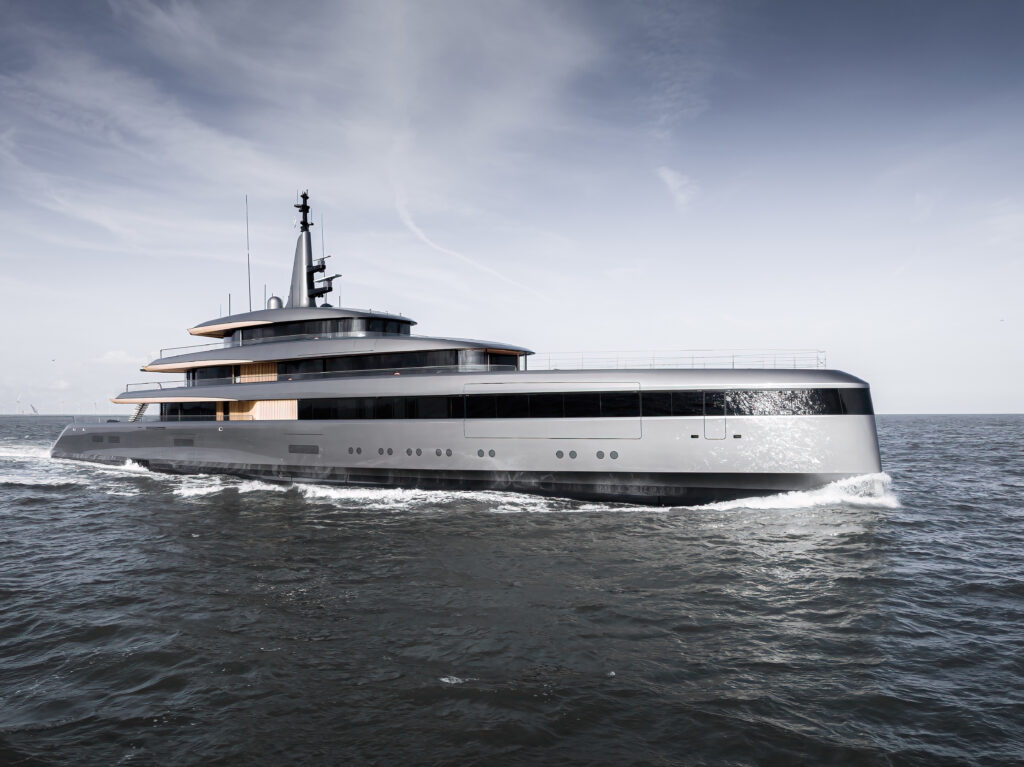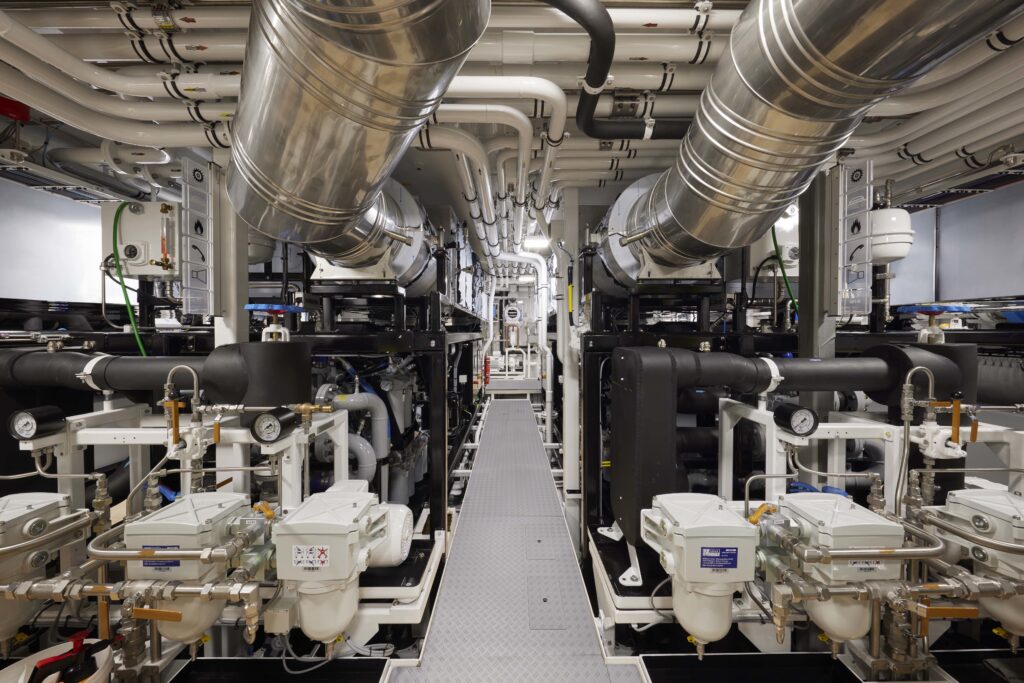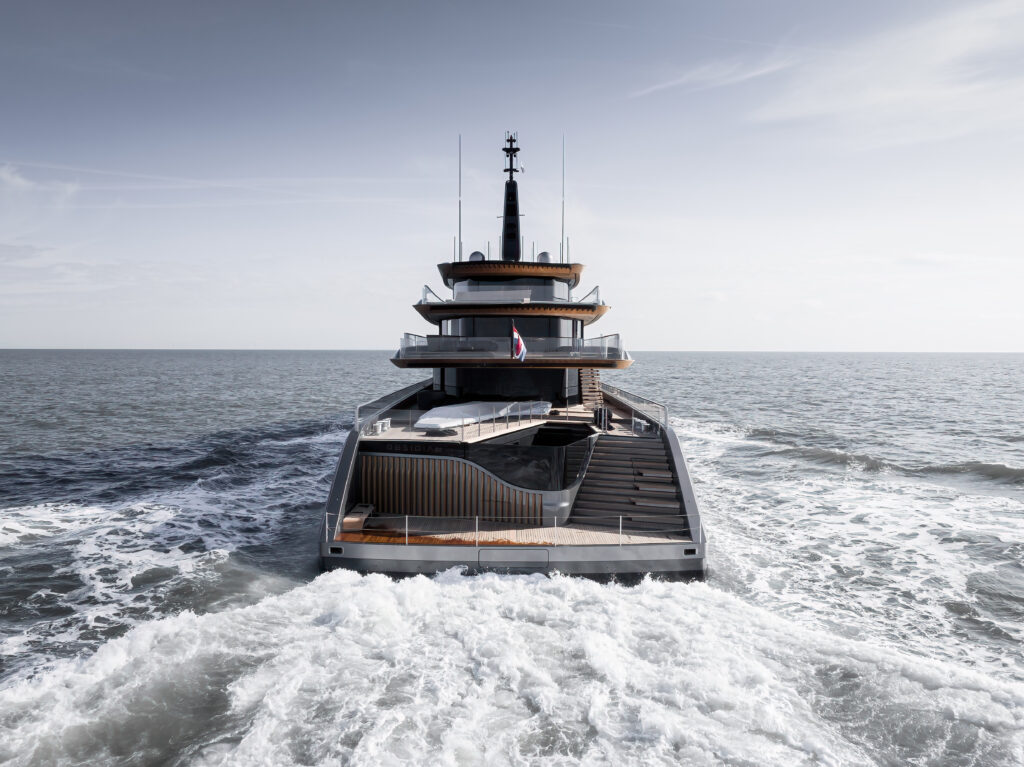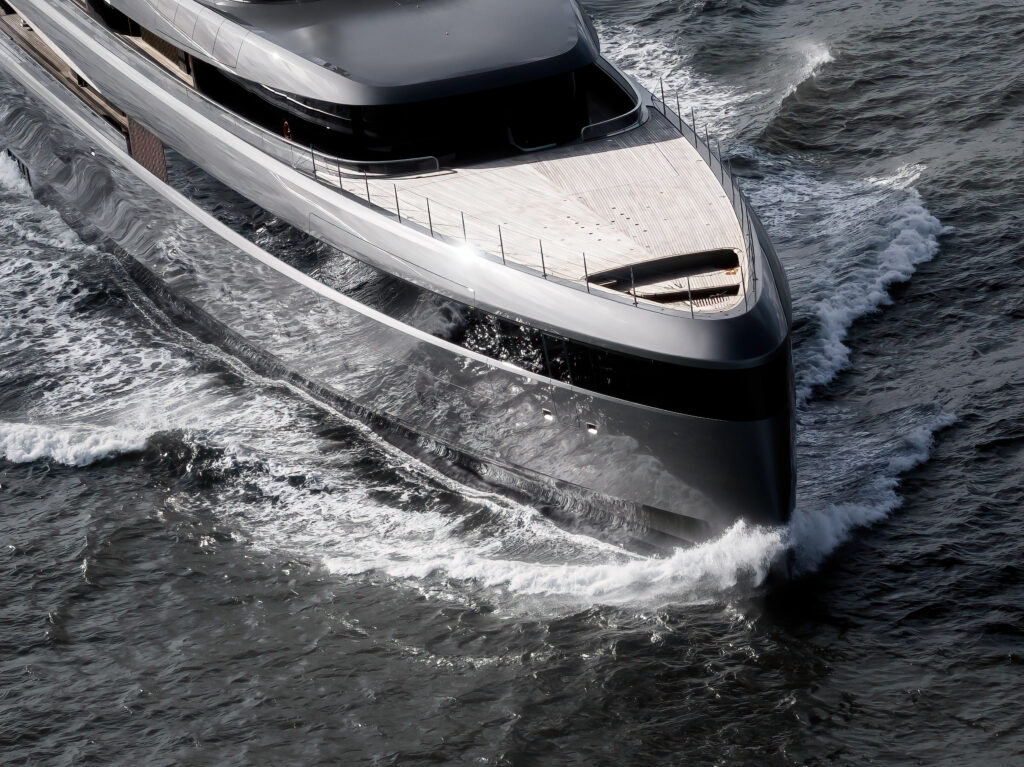
Feadship delivers 84.2m hybrid superyacht Obsidian
Feadship has launched its first vessel of 2023, the 84.2m hybrid superyacht Obsidian.
The Dutch shipyard, which specialises in custom superyachts, says Obsidian marks another step closer to the goal of producing ‘carbon-neutral’ superyachts by 2030. The vessel is the first of Feadship’s new generation of large yachts furthering carbon reduction through hulls optimised at cruising speed instead of top speed, weight control, advancements in electric propulsion, and the ability to run engines on non-fossil diesel fuel called HVO (hydrotreated vegetable oil).
Feadship says the yacht’s trials were conducted with the generators running on HVO, which can reduce carbon emissions by 90 per cent compared to yachts operating on fossil fuels.
The brief for the yacht was to be more energy efficient and emit less carbon than Feadship’s previous hybrid superyacht, Savannah, which launched in 2015.

Bram Jongepier, senior designer at Feadship De Voogt Naval Architects, has developed a sustainability index, providing guidance on how all of a yacht’s components and operations contribute to its carbon profile and environmental impact.
Jongepier’s work on these LCAs is now known as YETI, the Yacht Environmental Transparency Index. The algorithms describing the environmental impact of CO2, NOx, particulate matter, shore power, and fuel production have been made freely available by Feadship to the signatories of the Water Revolution Foundation.
This collaboration led to a Joint Industry Project (JIP) under the flag of the Water Revolution Foundation, with 20 major partners in the yachting industry.
The YETI JIP produced a tool which, with data augmented now by other partners like engine manufacturers, predicts the environmental impact of a standardised operational year in the yacht’s lifecycle.
It is therefore estimated that Obsidian will operate with 27 per cent less total environmental impact than a yacht of similar size launched only five years ago if run on fossil fuel, and 60 per cent less when using HVO.

Obsidian has 4.5 times more electrical storage capacity than Savannah. The yacht has no drive shafts and no rudders, preventing added drag. Propulsion and steering are supplied by a pair of Veth contra-rotating thrusters that deliver both functions. Powering it all is a 4.5 MWh battery bank that is charged by four generators — two large and two small, custom, variable speed units. Obsidian should be able to cruise for 35 nm at 10 knots on batteries alone. At anchor, the batteries will provide silent operation for ten to 15 hours.
With around 60 per cent of the yacht’s energy consumed by the ‘hotel load’ (heating, cooling, lighting, entertainment and so on), further fuel savings have been made by peak load shaving and reducing HVAC demand through the computerised management of cooling guest and crew zones.
Obsidian also captures waste heat from the generators and the AC chillers themselves, for repurposing in the HVAC system. “There are so many points of energy savings integrated on this yacht that it is hard to count,” says project manager Mark Jansen.

The yacht has a single-level engine room, which Feadship says gave its designers considerably more freedom in creating the interior layout. It also lends more space for guest accommodation and features a total of seven staterooms. According to Jansen, the volume of this 84-metre yacht is typical of that of 100-metre Feadships.
Both the exterior styling and interior design are by the British firm RWD, in collaboration with Monk Design.
An asymmetrical atrium staircase leads to a lower deck dining saloon with an entire wall that opens to provide a terrace view just 75cm above sea level. Near the stern is an ‘aqua lounge’ where massive windows below water level offer a unique view from the nearby gym. The aqua lounge can also function as a cinema and even a classroom.

A hidden staircase to a study and a sunken lounge on the main deck are two more unexpected interior elements of the hybrid superyacht. But the biggest surprise involves the use of submarine anchors. Eliminating the need for a mooring deck forward allows Obsidian to feature an interior bow observation lounge with double curved glass floor-to-ceiling windows. Access is via a main deck corridor from the guest accommodation area through the tender garage.
In keeping with the carbon reduction theme, both of the yacht’s primary tenders are electric-powered and custom-made by Tenderworks. Four fast charging stations installed by the yard will allow them to be charged in the water or in the tender garage.

Feadship says that, after the sea trials, it turned out that Obsidian was more efficient than originally calculated.
In April, Feadship confirmed it is entering the hydrogen superyacht market. Feadship confirms the yacht — which is already in-build — will house a cryogenic fuel tank, storing liquified hydrogen at around -250°C; being the densest storage method of pure hydrogen. The shipyard says this fuel cell bank will be sufficient to sail at a decent speed while still powering the hotel load in summer conditions.
The post Feadship delivers 84.2m hybrid superyacht Obsidian appeared first on Marine Industry News.
